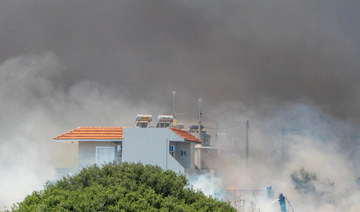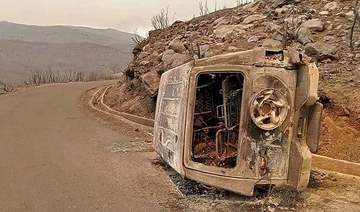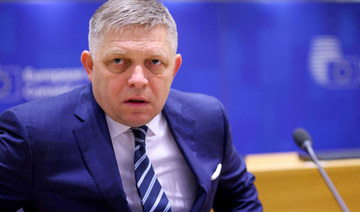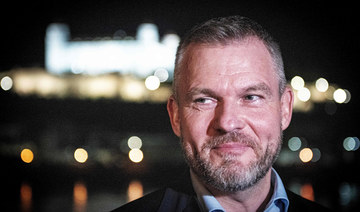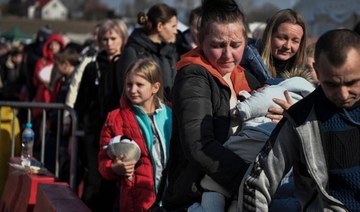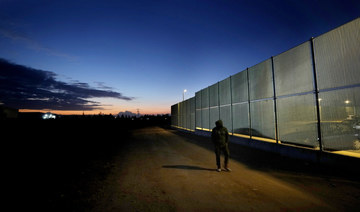DENVER: As Denver neared triple-digit temperatures, Ben Gallegos sat shirtless on his porch swatting flies off his legs and spritzing himself with a misting fan to try to get through the heat. Gallegos, like many in the nation’s poorest neighborhoods, doesn’t have air conditioning.
The 68-year-old covers his windows with mattress foam to insulate against the heat and sleeps in the concrete basement. He knows high temperatures can cause heat stroke and death, and his lung condition makes him more susceptible. But the retired brick layer, who survives on about $1,000 a month largely from Social Security, says air conditioning is out of reach.
“Take me about 12 years to save up for something like that,” he said. “If it’s hard to breathe, I’ll get down to emergency.”
As climate change fans hotter and longer heat waves, breaking record temperatures across the US and leaving dozens dead, the poorest Americans suffer the hottest days with the fewest defenses. Air conditioning, once a luxury, is now a matter of survival.
As Phoenix weathered its 27th consecutive day above 110 degrees (43 Celsius) Wednesday, the nine who died indoors didn’t have functioning air conditioning, or it was turned off. Last year, all 86 heat-related deaths indoors were in uncooled environments.
“To explain it fairly simply: Heat kills,” said Kristie Ebi, a University of Washington professor who researches heat and health. “Once the heat wave starts, mortality starts in about 24 hours.”
It’s the poorest and people of color, from Kansas City to Detroit to New York City and beyond, who are far more likely to face grueling heat without air conditioning, according to a Boston University analysis of 115 US metros.
“The temperature differences ... between lower-income neighborhoods, neighborhoods of color and their wealthier, whiter counterparts have pretty severe consequences,” said Cate Mingoya-LaFortune of Groundwork USA, an environmental justice organization. “There are these really big consequences like death. ... But there’s also ambient misery.”
Some have window units that can offer respite, but “in the dead of heat, it don’t do nothing,” said Melody Clark, who stopped Friday to get food at a nonprofit in Kansas City, Kansas, as temperatures soared to 101, and high humidity made it feel like 109. When the central air conditioning at her rental house went on the fritz, her landlord installed a window unit. But it doesn’t do much during the day.
So the 45-year-old wets her hair, cooks outside on a propane grill and keeps the lights off indoors. She’s taken the bus to the library to cool off. At night she flips the box unit on, hauling her bed into the room where it’s located to sleep.
As far as her two teenagers, she said: “They aren’t little bitty. We aren’t dying in the heat. ... They don’t complain.”
While billions in federal funding have been allocated to subsidize utility costs and the installation of cooling systems, experts say they often only support a fraction of the most vulnerable families and some still require prohibitive upfront costs. Installing a centralized heat pump system for heating and cooling can easily reach $25,000.
President Joe Biden announced steps on Thursday to defend against extreme heat, highlighting the expansion of the Low Income Home Energy Assistance Program, which funnels money through states to help poorer households pay utility bills.
While the program is critical, said Michelle Graff, who studies the subsidy at Cleveland State University, only about 16 percent of the nation’s eligible population is actually reached. Nearly half of states don’t offer the federal dollars for summer cooling.
“So people are engaging in coping mechanisms, like they’re turning on their air conditioners later and leaving their homes hotter,” Graff said.
While frigid temperatures and high heating bills birthed the term “heat or eat,” she said, “we can now transition to AC or eat, where people are going to have to make difficult decisions.”
As temperatures rise, so does the cost of cooling. And temperatures are already hotter in America’s low-income neighborhoods like Gallegos’ Denver suburb of Globeville, where people live along stretches of asphalt and concrete that hold heat like a cast-iron skillet. Surface temperatures there can be roughly 8 degrees hotter than in Denver’s wealthier neighborhoods, where a sea of vegetation cools the area, according to the environmental advocacy group American Forests.
This disparity plays out nationwide. Researchers at the University of San Diego analyzed 1,056 counties and in over 70 percent, the poorest areas and those with higher Black, Hispanic and Asian populations were significantly hotter.
About one in 10 US households have no air conditioning, a disparity compounded for marginalized groups, according to a study by the Brookings Institution. Less than 4 percent of Detroit’s white households don’t have air conditioning; it’s 15 percent for Black households.
At noon on Friday, Katrice Sullivan sat on the porch of her rented house on Detroit’s westside. It was hot and muggy, but even steamier inside the house. Even if she had air conditioning, Sullivan said she’d choose her moments to run it to keep her electricity bill down.
The 37-year-old factory worker pours water on her head, freezes towels to put around her neck, and sits in her car with the air conditioner on. “Some people here spend every dollar for food, so air conditioning is something they can’t afford,” she said.
Shannon Lewis, 38, lived in her Detroit home for nearly 20 years without air conditioning. Lewis’s bedroom was the only place with a window unit, so she’d squeeze her teenager, 8-year-old and 3-year-old-twins into her queen-size bed to sleep, eat meals and watch television.
“So it was like cool in one room and a heat stroke in another,” Lewis said. For the first time, Lewis now has air conditioning through a local non-profit, she said. “We don’t have to sleep or eat in the same room, we are able to come out, sit at the dining room table, eat like a family.”
After at least 54 died during a 2021 heat wave, mostly elderly people without air conditioning, in the Portland area, Oregon passed a law prohibiting landlords from placing blanket bans on air conditioning units. By and large, however, states don’t have laws requiring landlords to provide cooling.
In the federal Inflation Reduction Act, billions were set aside for tax credits and rebates to help families install energy-efficient cooling systems, but some of those are yet to be available. For people like Gallegos, who doesn’t pay taxes, the available credits are worthless.
The law also offers rebates, the kind of state and federal point-of-sale discounts that Amanda Morian has looked into for her 640-square-foot home.
Morian, who has a 13-week-old baby susceptible to hot weather, is desperate to keep her house in Denver’s Globeville suburb cool. She bought thermal curtains, ceiling fans and runs a window unit. At night she tries to do skin-to-skin touch to regulate the baby’s body temperature. When the back door opens in the afternoon, she said, the indoor temperature jumps a degree.
“All of those are just to take the edge off, it’s not enough to actually make it cool. It’s enough to keep us from dying,” she said.
She got estimates from four different companies for installing a cooling system, but every project was between $20,000 and $25,000, she said. Even with subsidies she can’t afford it.
“I’m finding that you have to afford the project in the first place and then it’s like having a bonus coupon to take $5,000 off of the sticker price,” she said.
Lucy Molina, a single mom in Commerce City, one of Denver’s poorest areas, said her home has reached 107 degrees without air conditioning. Nearby, Molina’s two teenage children slurped popsicles to cool off, lingering in front of the open freezer.
For Molina, who bustled around her kitchen on a recent day when temperatures reached 99 degrees outdoors, it’s hard to see any path to a cooling respite.
“We’re just too poor,” she said.




